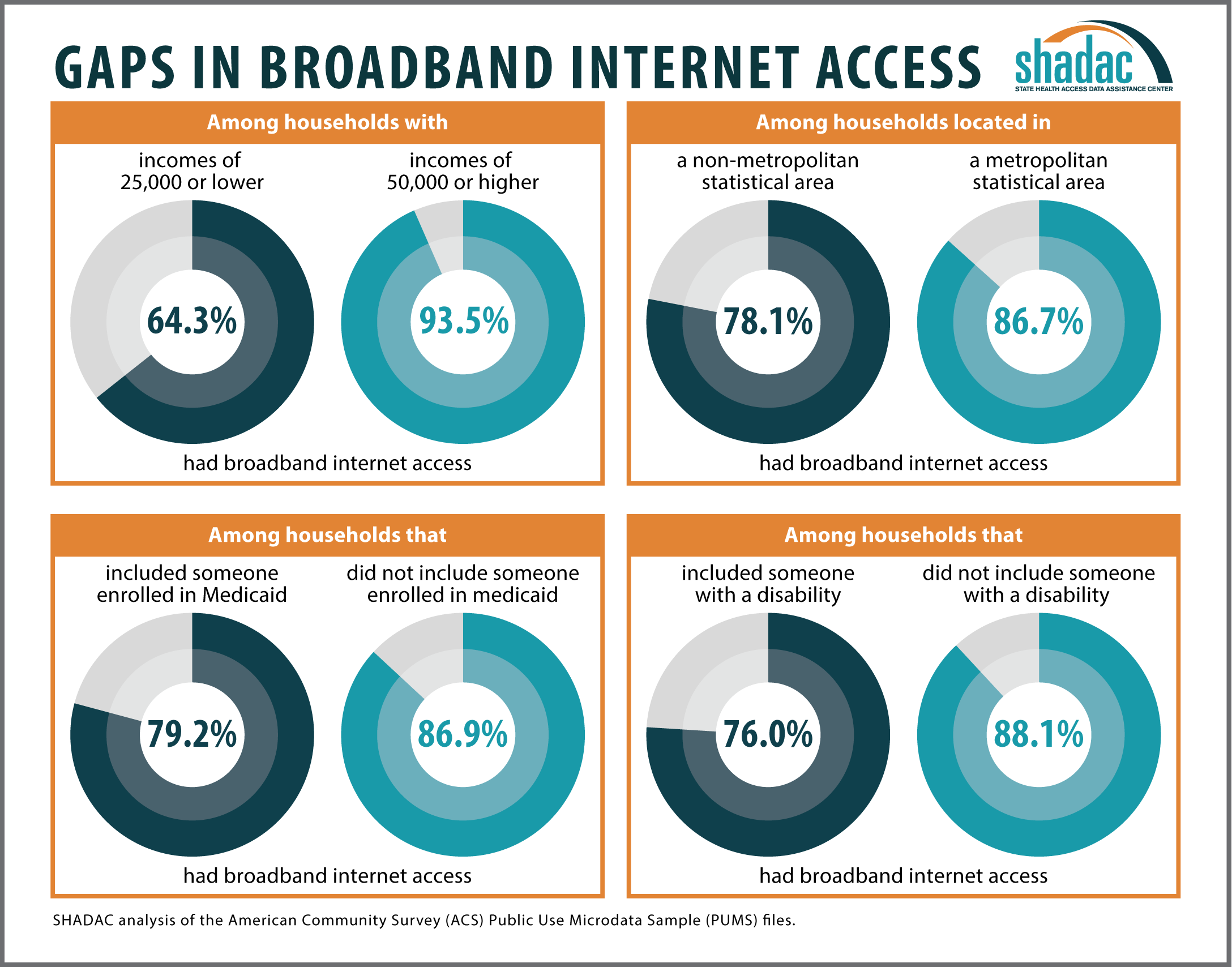SHADAC Expertise
Population Health
Population health research focuses on the health outcomes, health determinants, and policies and programs that affect a specific group of individuals, or “population.” SHADAC researchers often conduct population health research by geographic levels, most often for states, but also offer technical assistance to state researchers and policy analysts who might be interested in looking at population health by county or city. Other examples of SHADAC’s population health expertise focus around studies of health disparities for a particular measure based on race or ethnicity, income level, or education level and assessments of state health information exchange policies.
Related SHADAC work
Click on any title below to learn more about the project.
Prevalence and disparities in excessive alcohol use among U.S. adults
In the past several years, researchers have shone new light on the public health threat of alcohol consumption in the United States. Nationally, life expectancy has declined, while deaths involving drugs and alcohol have increased. Those findings are reinforced by studies finding increased high-risk alcohol consumption, such as binge drinking and heavy drinking. And early evidence indicates that the COVID-19 pandemic has only accelerated Americans’ alcohol consumption and risky drinking behaviors. This report focuses on high-risk alcohol consumption behaviors that can lead to death and other alcohol-involved diseases. Similar to alcohol-involved deaths, significant differences were found among demographic subgroups in the prevalence of binge drinking and heavy drinking.
Rates of Anxiety and Depression Symptoms Declined in 2021, Remained Higher than Pre-Pandemic
This brief examines both combined and individual rates of reported anxiety and depression symptoms for the total adult population as well as by specific breakdowns, including age, gender, race/ethnicity, income categories, and education levels. Findings discussed in this brief can help public health officials and policymakers identify the need for intervention and outreach targeted at populations that have been especially affected by the mental health burdens of the pandemic.
Exploring 2021 State Public Health Funding Estimates Using State Health Compare
Tracking data on state public health funding can help identify which states are well-positioned to absorb potential decreases in federal funding (assuming no recourse to additional state-level funding) and improve efforts to distribute scarce public health resources most effectively nationwide. This updated SHADAC brief on state-provided public health funding estimates highlights newly-available 2021 data as well as trends over the past decade (2012–2021). These estimates come from SHADAC’s State Health Compare measure, “Public Health Funding”, which provides annual estimates of per-capita state public health funding starting in 2005 (with the exception of data year 2006, for which no estimates are available).
The Opioid Crisis in the Pandemic Era
During 2020 and 2021, the first two years of the COVID-19 pandemic, data show that drug overdose deaths did not subside or plateau, but unfortunately surged alongside the rise of the coronavirus. Growing death rates were driven by a substantive change in the very foundation of the opioid crisis, transforming it from a public health threat caused by prescription painkillers to one in which overdose deaths are predominantly due to three different substances: methamphetamine, cocaine, and, most concerningly, fentanyl. In their newest opioid brief, SHADAC researchers examine this latest shift in the long-standing crisis of opioid use in the United States. Read the brief in full here for more detailed findings, and explore the data by topic on SHADAC's State Health Compare.
Past Work
Charting Two Decades of the Evolving Opioid Crisis
Just over a decade after the U.S. Centers for Disease Control and Prevention (CDC) declared an “epidemic” of overdoses from prescription painkillers in 2011, the opioid crisis is worse than ever—yet it only vaguely resembles those earlier days. While people are still dying of overdoses tied to prescription opioids, the problem has largely shifted to illicitly trafficked opioids, such as fentanyl, and is now deeply intertwined with other non-opioid substances, such as methamphetamine and cocaine. This blog examines the history and evolution of the opioid crisis through several charts based on data from SHADAC’s State Health Compare.
Internet Access Measures the Impact of the Digital Divide and COVID-19
 Lack of equitable access to broadband internet services across all households has been an issue of concern among health care experts even prior to the coronavirus pandemic. Initially, the problem of digital divide was studied in terms of barriers to health plan application and enrollment during the rollout of the newly developed online health insurance marketplace. In light of the coronavirus pandemic, lack of access to broadband internet services has also emerged as a potential challenge to efforts to respond to the coronavirus; not only in preventing individuals from accessing the real-time information they need surrounding COVID-19, but also in lost chances for utilization of telehealth services, ability to work remotely, keeping pace with an e-learning curriculum, or to help mitigate the dangers of social isolation while practicing social distancing. SHADAC researchers explore the variation in access to broadband internet across states, and reveal disparities by income, rurality, coverage, and disability status.
Lack of equitable access to broadband internet services across all households has been an issue of concern among health care experts even prior to the coronavirus pandemic. Initially, the problem of digital divide was studied in terms of barriers to health plan application and enrollment during the rollout of the newly developed online health insurance marketplace. In light of the coronavirus pandemic, lack of access to broadband internet services has also emerged as a potential challenge to efforts to respond to the coronavirus; not only in preventing individuals from accessing the real-time information they need surrounding COVID-19, but also in lost chances for utilization of telehealth services, ability to work remotely, keeping pace with an e-learning curriculum, or to help mitigate the dangers of social isolation while practicing social distancing. SHADAC researchers explore the variation in access to broadband internet across states, and reveal disparities by income, rurality, coverage, and disability status.




